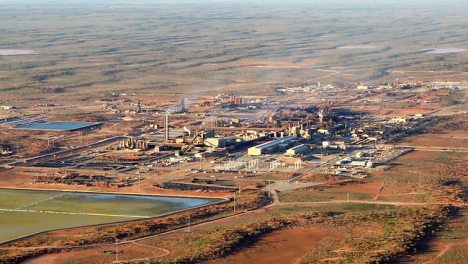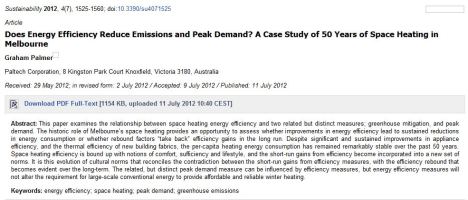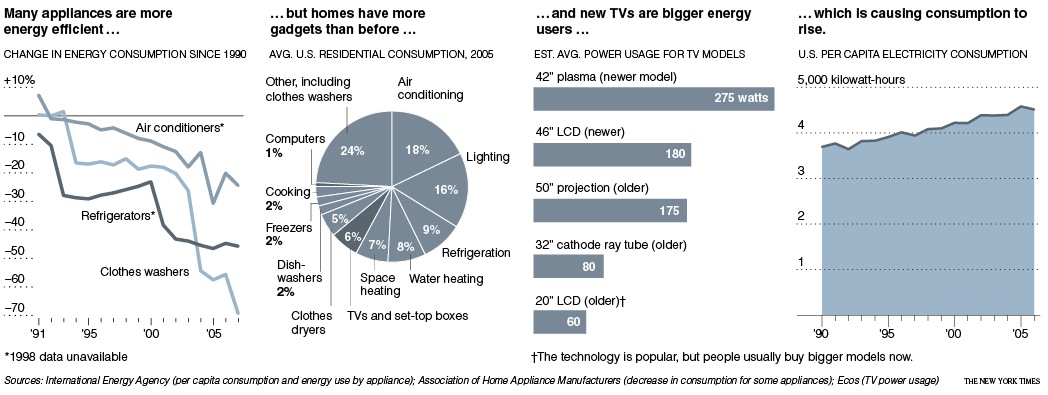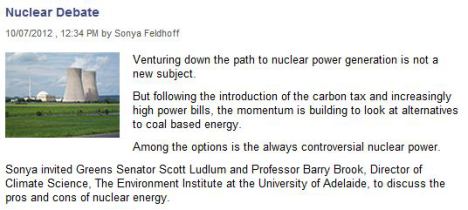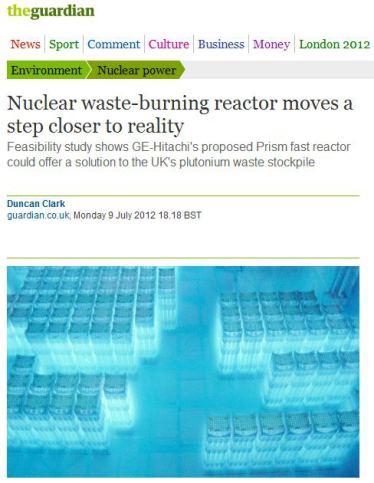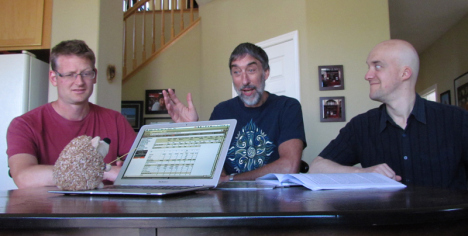Here is an Op Ed published by Geoff Russell and me in the The Adelaide Advertiser newspaper this week. It was in response to this piece by Jim Green.
————
OLYMPIC Dam uranium can power Australia four times over and close all our coal mines, write Geoff Russell and Barry Brook.
FRIENDS of the Earth’s Jim Green makes important points on the Olympic Dam expansion (The Advertiser, 10/7/12).
Should BHP be given an easy ride on this project? If so, why?
Here’s some background people need before making a decision.
The expanded Olympic Dam will be a massive hole in the ground.
How big? About 12sq km in area and 1km deep.
For comparison, the proposed alpha coal mine in Queensland will be about 400sq km. The various coal mines in the Hunter Valley are also much bigger, not necessarily individually, but they are all big holes and they add up to a much bigger hole than the proposed Olympic Dam expansion.
Yet Olympic Dam is different. Most of what comes out will be copper but, at peak production, it will also be producing 19,000 tonnes of uranium oxide annually.
How much is that? Enough to power the whole of Australia four times over. Enough to close all of Australia’s coal mines for domestic consumption. So here’s the first question for Jim Green.
We could have nuclear reactors, clean electricity and one mine, just one single mine. Or we could have the whole current nightmare of the Hunter Valley, Latrobe Valley and Bowen Basin disasters, gas fracking and every other filthy deadly fossil fuel industry in Australia.
What’s his choice?
Filed under: Clim Ch Q&A, Emissions, Nuclear | 1 Comment »






.png)
